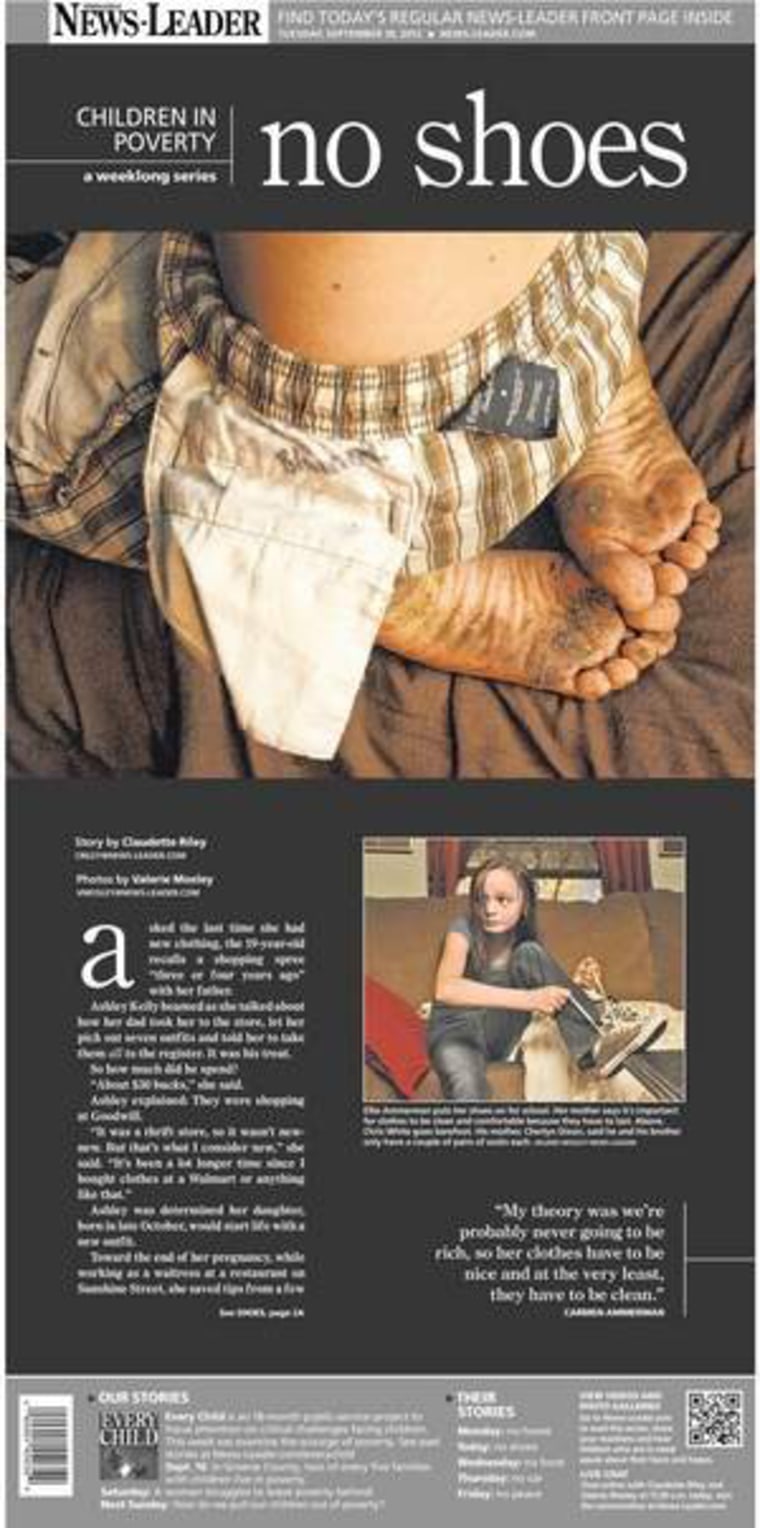"Why is there so little coverage of Americans who are struggling with poverty?"
So begins a thought-provoking essay by Dan Froomkin in Nieman Reports, a respected publication that covers journalism, raising a subject that is getting more ink than usual these days.
In his essay, Froomkin examines what he sees as paltry coverage of America's poor. Citing research from the Pew Research Center's Project for Excellence in Journalism, Froomkin reports that poverty coverage takes up less than one percent of the news content in the nation's major news outlets.
He and others suggest some possible reasons ("neither advertisers nor readers are likely to demand more coverage, so neither will editors," for one) along with a wealth of ideas that could make compelling stories for readers and viewers.
Froomkin's piece begins with an example of what he'd like to see more of: a major series that ran on the front page of the Springfield News-Leader in Missouri's Ozarks for five consecutive days, focusing each day on a specific problem facing children in Missouri's Ozarks region: "No home," "No shoes," "No food," "No car," and "No peace." It's outstanding work, well worth a read.
Froomkin's article led the public editor (a/k/a ombudsman) of The New York Times to raise questions about her own newspaper's coverage of poverty, and to let readers know she'd be digging further into that question in coming weeks. Among her initial observations: The Times reporter who has covered poverty policy for decades thinks the paper "has made an extraordinary commitment" to the subject, but some advocates for the poor beg to differ. We'll be watching for more of this discussion in the weeks ahead.
This past Sunday, some of us woke up to a lively viewer call-in segment on C-Span’s Washington Journal about hunger in America, and about media coverage of it. A lot of callers had strong feelings about the issue, and about what should be done to attack the poverty problems in the country (as did almost all of the hundreds of commenters on our first blog post for the In Plain Sight project here).
Here is more of what the In Plain Sight team has been watching and reading this week:
- The Philadelphia Inquirer reports Philly has the highest rate of deep poverty – that’s income below half the poverty line – of big cities in America. That's perhaps not a surprise, because Philadelphia also has the highest poverty rate – 28.4 percent – of any of America’s biggest cities.
- The Washington Post had a terrific read on a Rhode Island town that relies on food stamps to survive. Be sure to check out the accompanying SNAP Map breaking down food stamp distribution by state.
- Is hunger in America a “myth”? A former Montana state legislator makes the argument in an op-ed in the Great Falls Tribune.
- And here’s one economist’s argument against raising the minimum wage.
What are you reading and watching on poverty in America? And what are your thoughts about media coverage of poverty?
